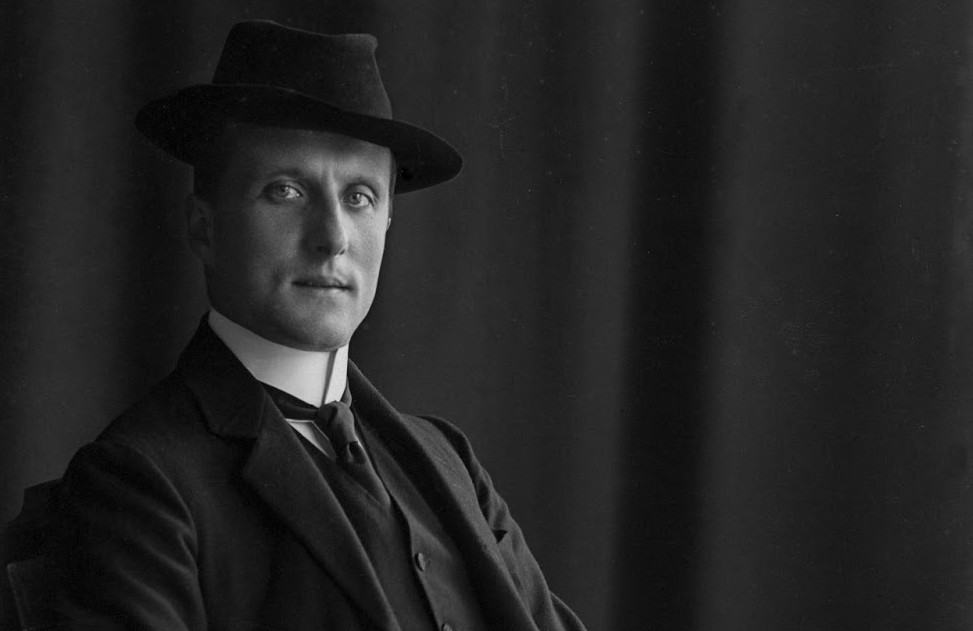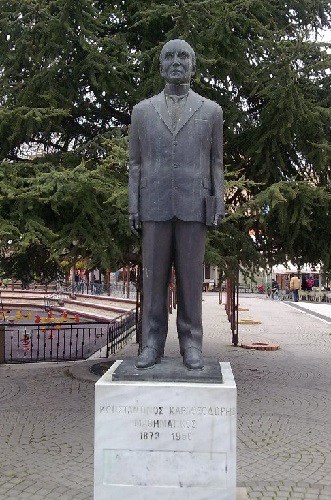
Constantin Carathéodory (Κωνσταντίνος Καραθεοδωρή) was a Greek mathematician who made significant contributions to the calculus of variations, the theory of point set measure, and the theory of functions of a real variable.
He was born on September 13, 1873, in Berlin to Greek parents and grew up in Brussels.
His father Stephanos, a lawyer, served as the Ottoman ambassador to Belgium, St. Petersburg and Berlin. His mother, Despina, née Petrokokkinos, was from the island of Chios.
In 1885, Carathéodory attended a grammar school in Brussels where he first began to become interested in mathematics. In 1886, he was a student at the Athénée Royal d'Ixelles and studied there until his graduation in 1891. During his time there, he was named the 'best mathematics student in Belgium', twice.
Later, he trained as a military engineer. In 1897, when a war broke out between the Ottoman Empire and Greece, he was offered a job in the British colonial service. This job took him to Egypt where he worked on the construction of the Assiut dam until April 1900.
During periods when construction work had to stop due to floods, Carathéodory studied mathematics from some textbooks he had with him, such as Jordan's Cours d'Analyse and Salmon's text on the analytic geometry of conic sections.
He also visited the Cheops pyramid and made measurements which he wrote up and published in 1901.
After hearing excellent reports of mathematics research at Göttingen, Germany, Carathéodory decided to study there in 1902. He was indeed impressed with Göttingen, describing it as the "seat of an international congress of mathematicians permanently in session."
He worked on the calculus of variations and was much influenced by mathematicans David Hilbert and Felix Klein.
Carathéodory made significant contributions to the calculus of variations, the theory of point set measure, and the theory of functions of a real variable. He added important results to the relationship between first order partial differential equations and the calculus of variations.

He also made contributions in thermodynamics, the special theory of relativity, mechanics, and geometrical optics.
The mathematician also wrote many books including: Lectures on Real Functions (1918), Conformal representation (1932), Calculus of Variations and Partial Differential Equations (1935), Geometric Optics (1937), Real functions Vol. 1: Numbers, Point sets, Functions (1939), and Funktionentheorie, a 2 volume work (1950).
Constantin Carathéodory passed away on February 2, 1950, at the gage of 77.
In 2002, in recognition of his achievements, the University of Munich named one of the largest lecture rooms in the mathematical institute the Constantin-Carathéodory Lecture Hall.

On 21 March 2009, the museum "Karatheodoris" (Καραθεοδωρής) opened its gates to the public, in Komotini. The museum is home to original manuscripts of the mathematician of about 10,000 pages including correspondence of Carathéodory with the German mathematician Arthur Rosenthal for the algebraization of measure, as well as handwritten letter and photographs.


